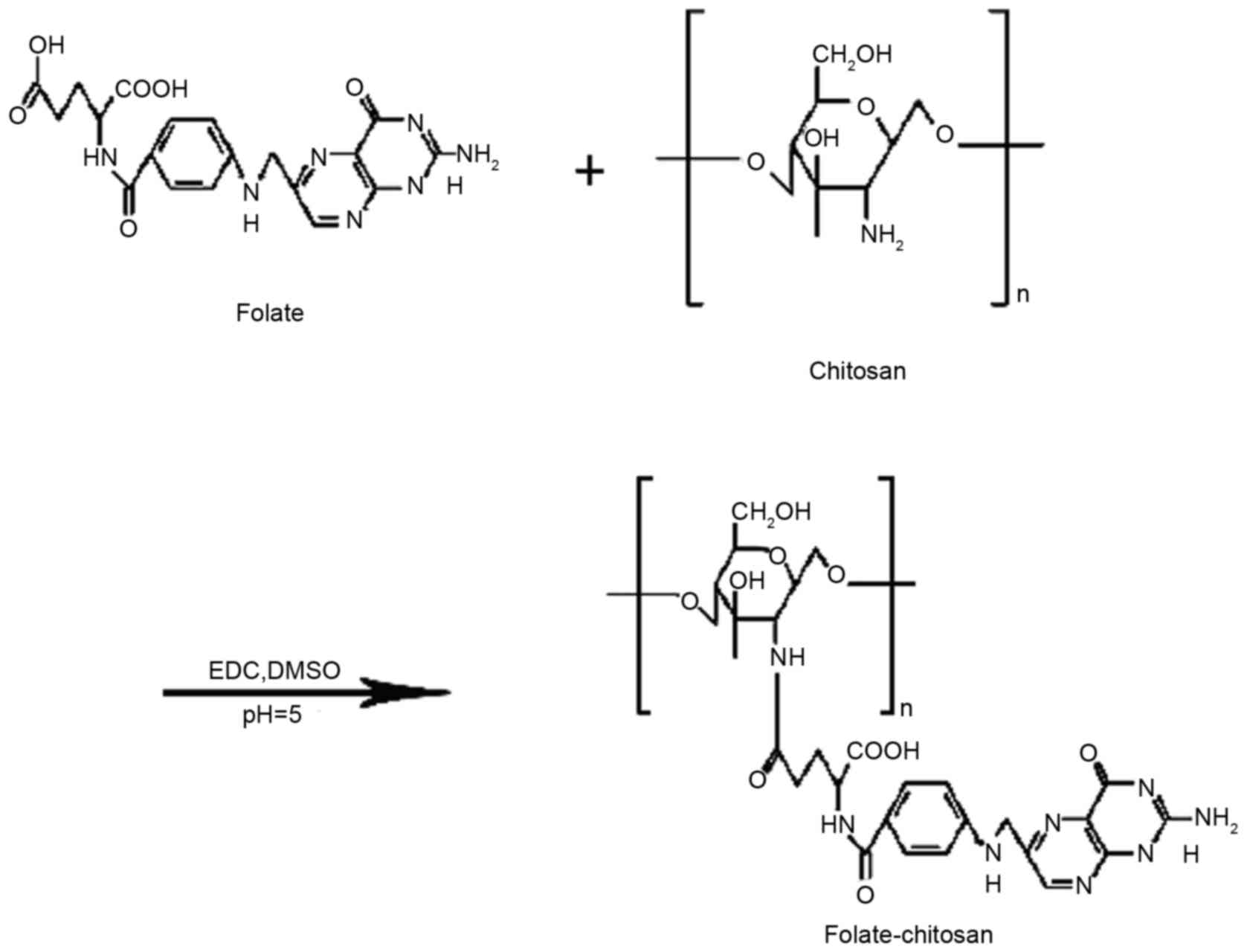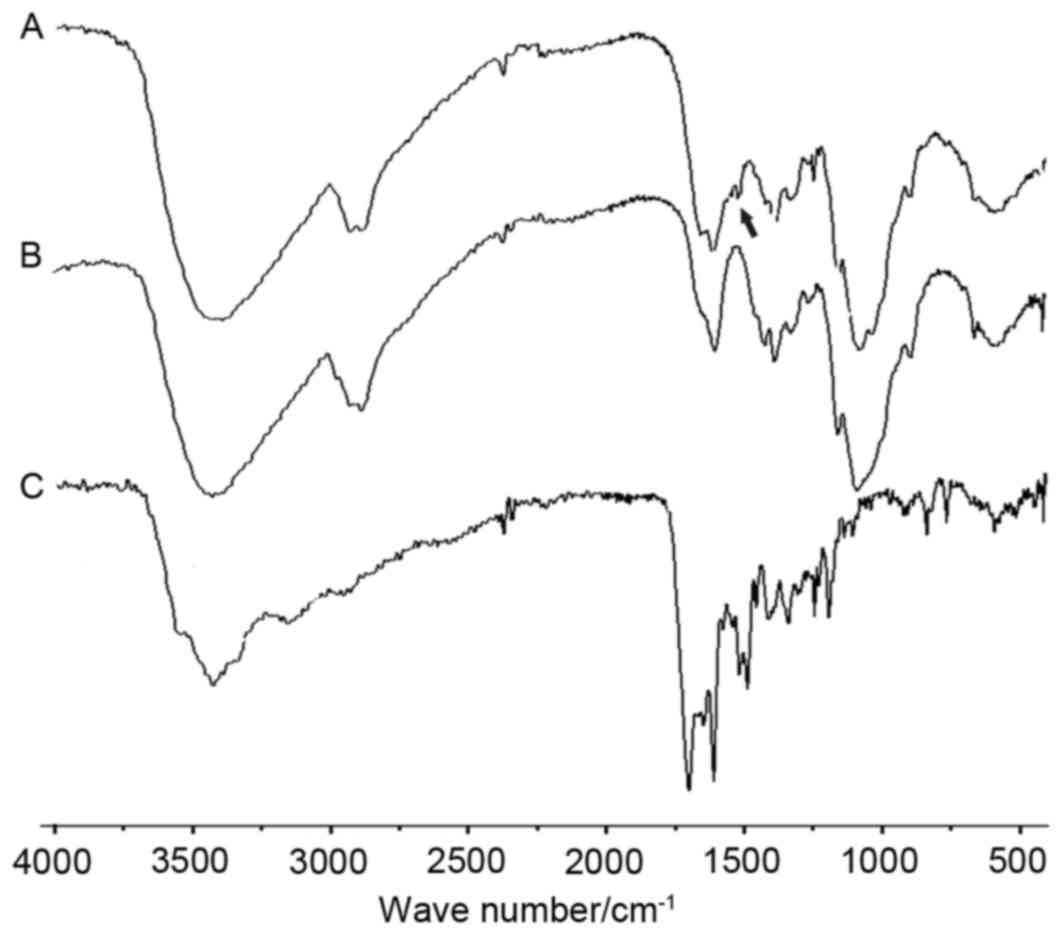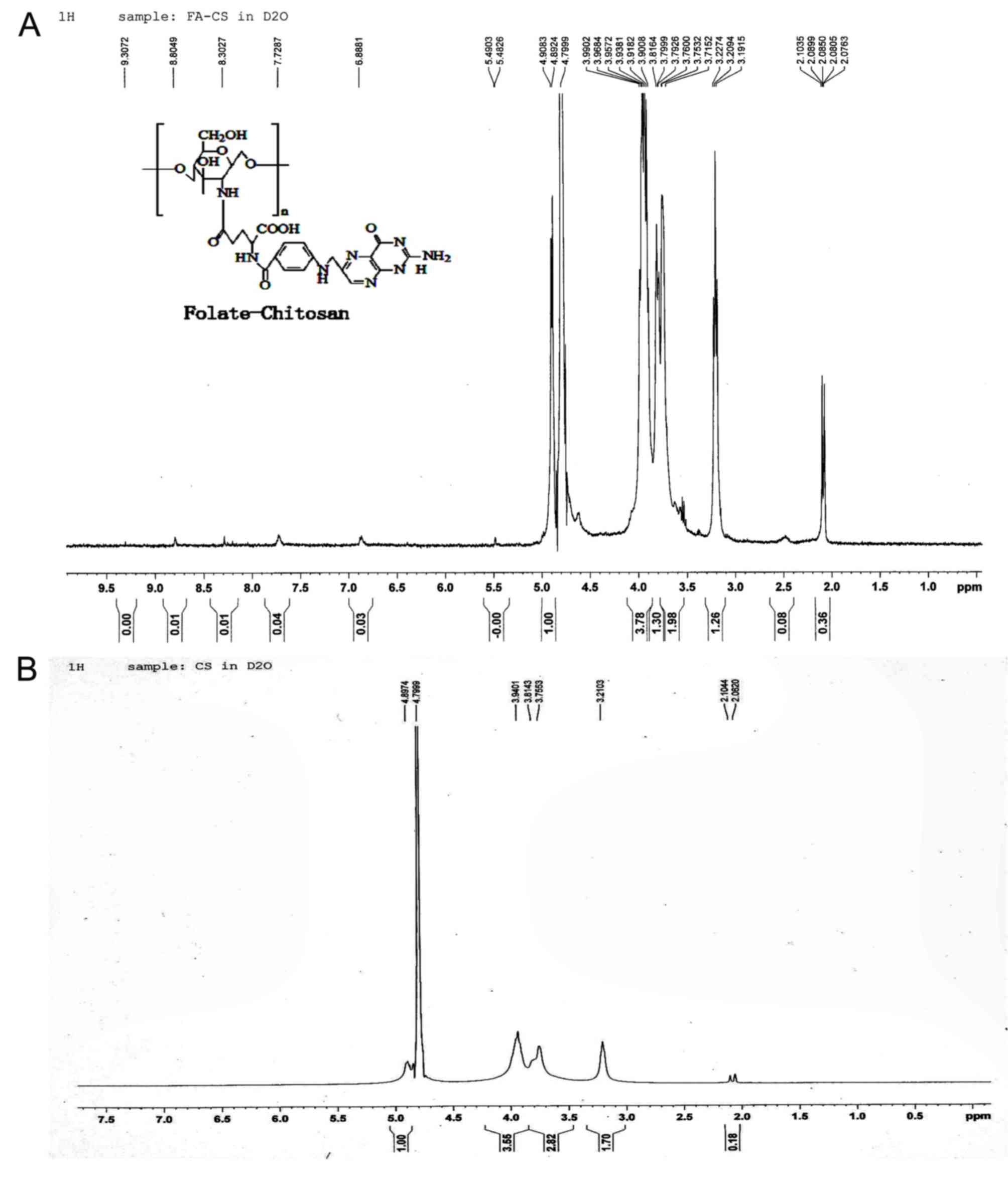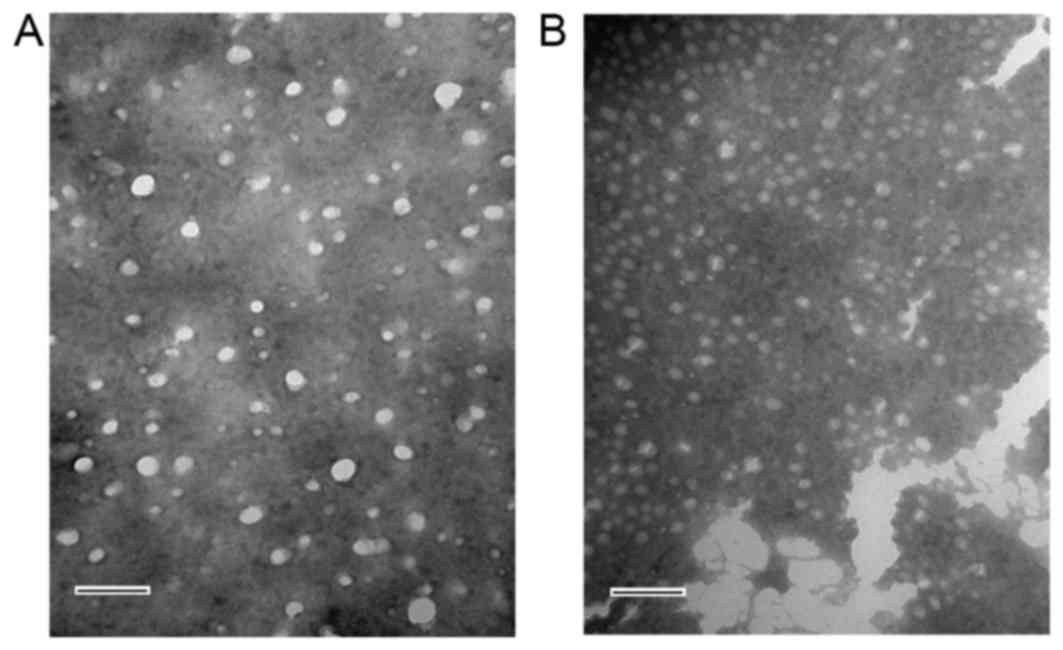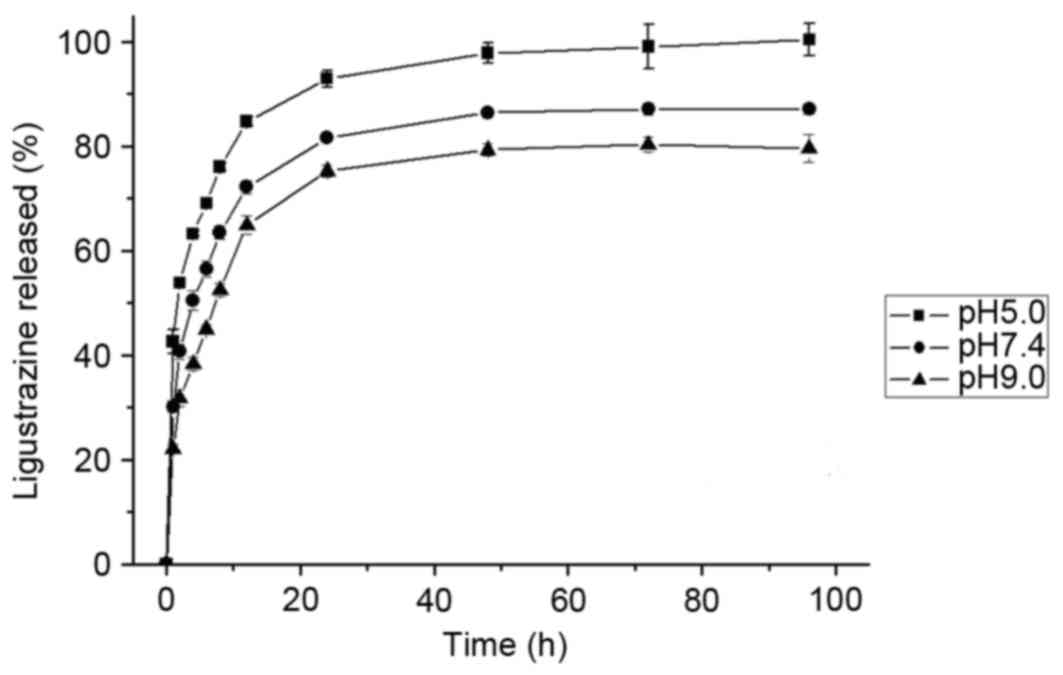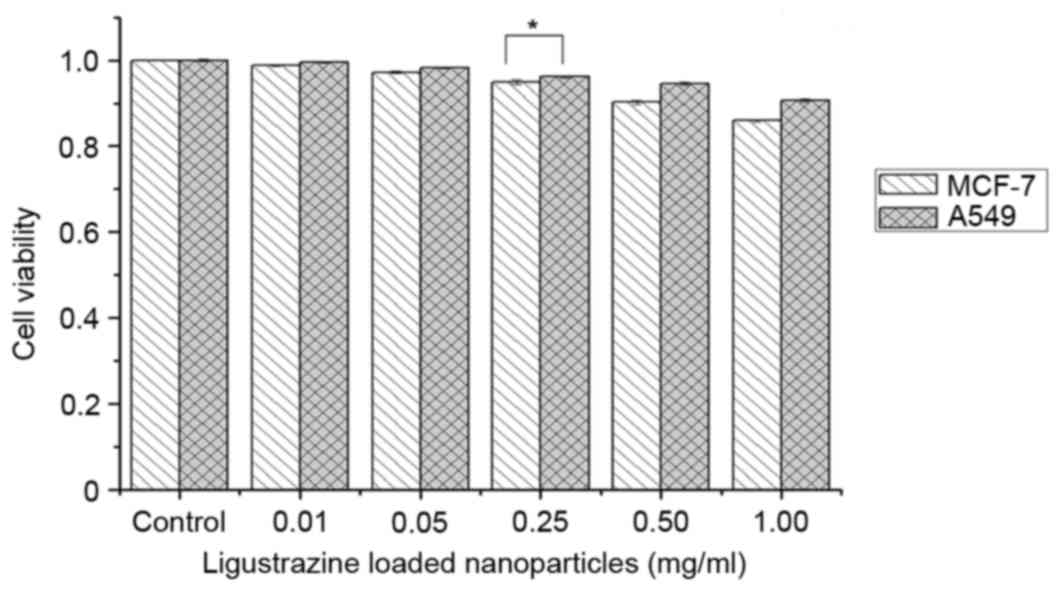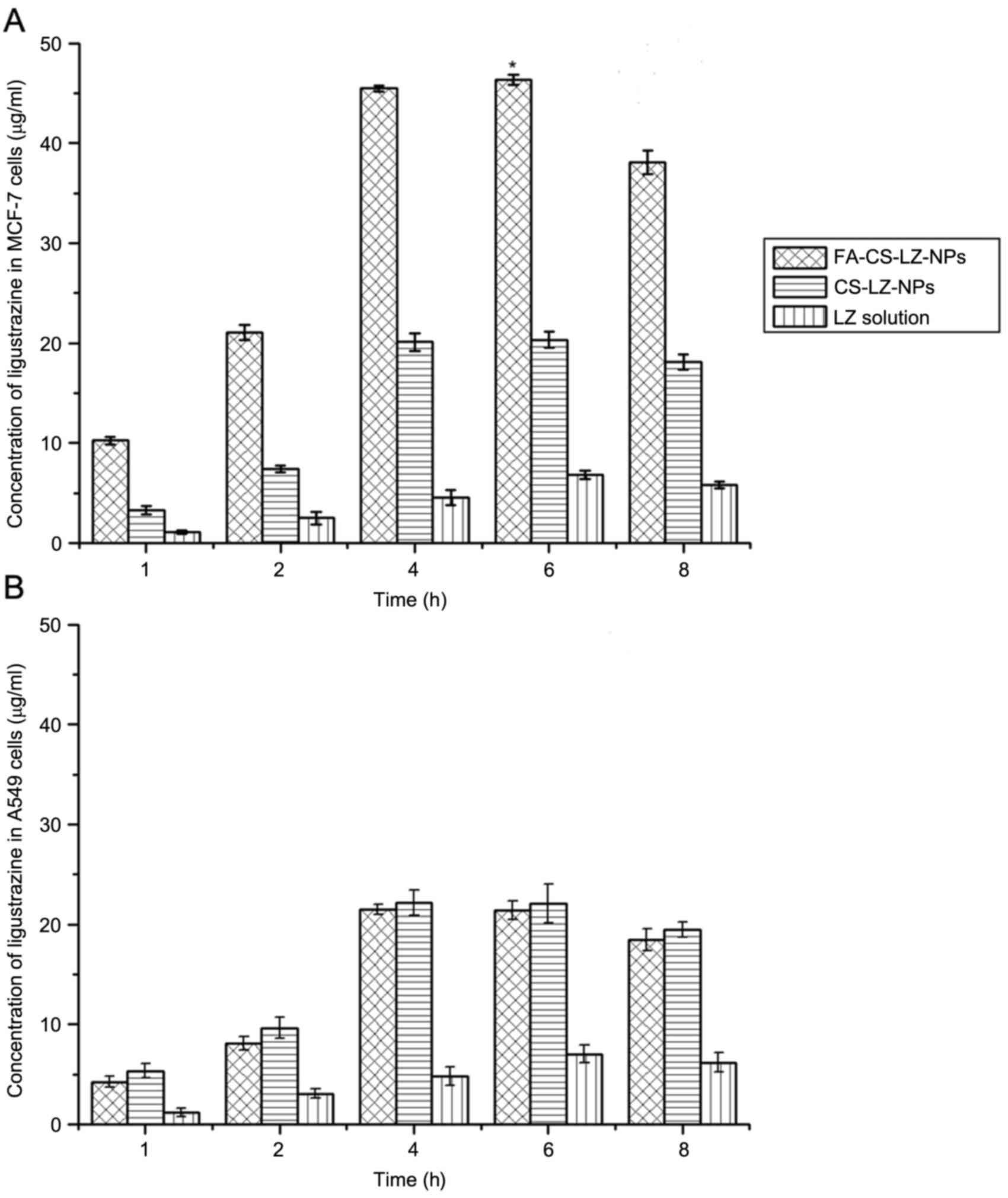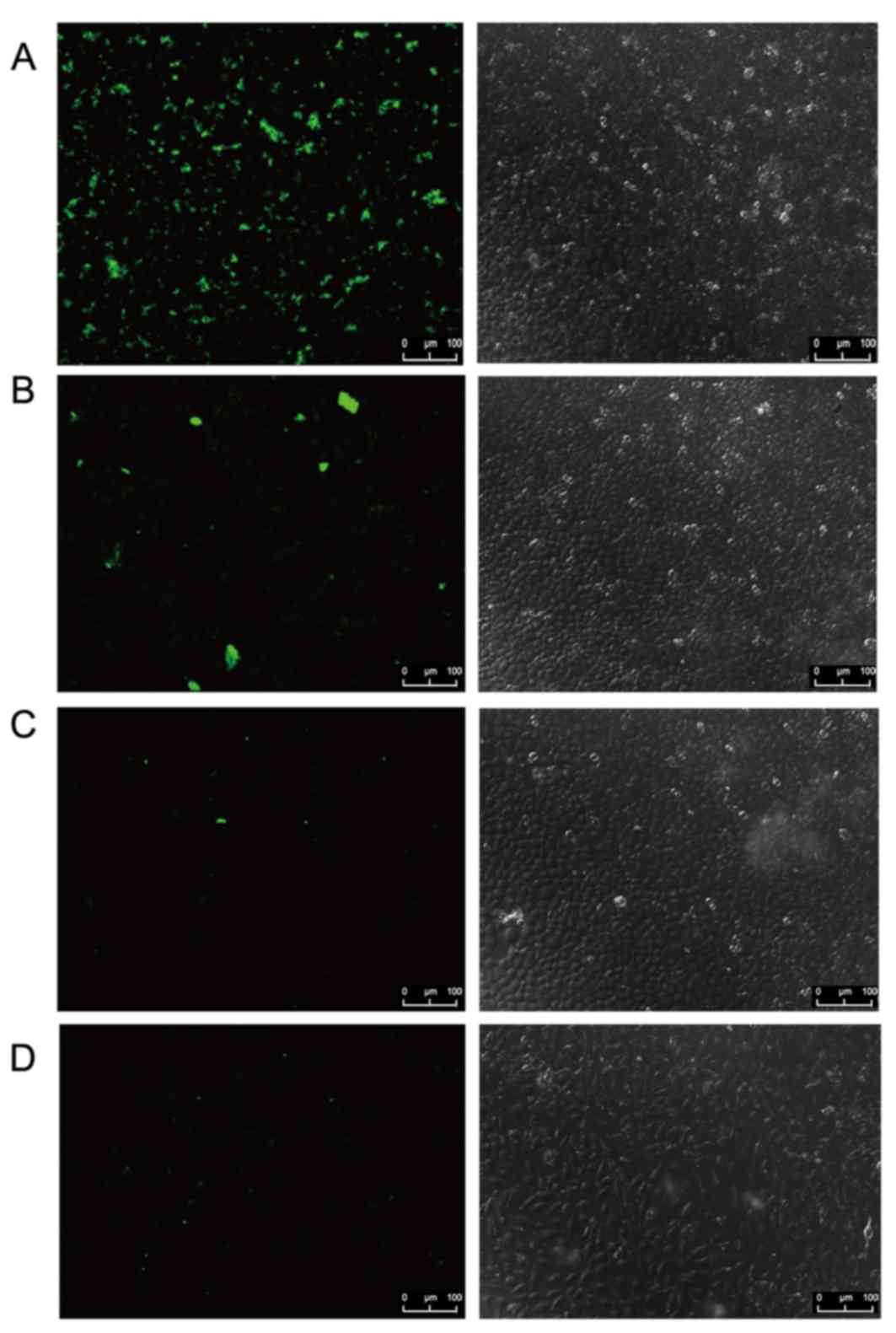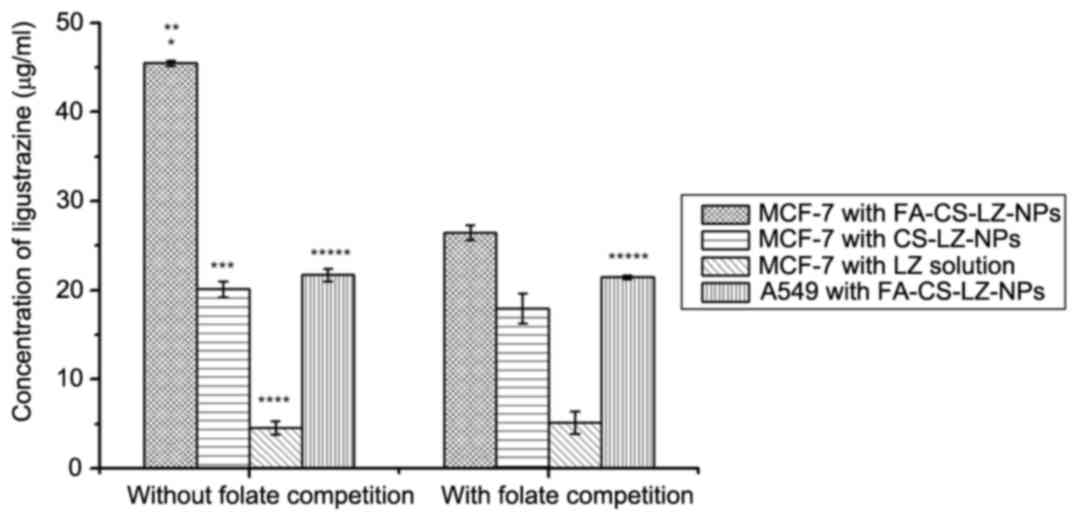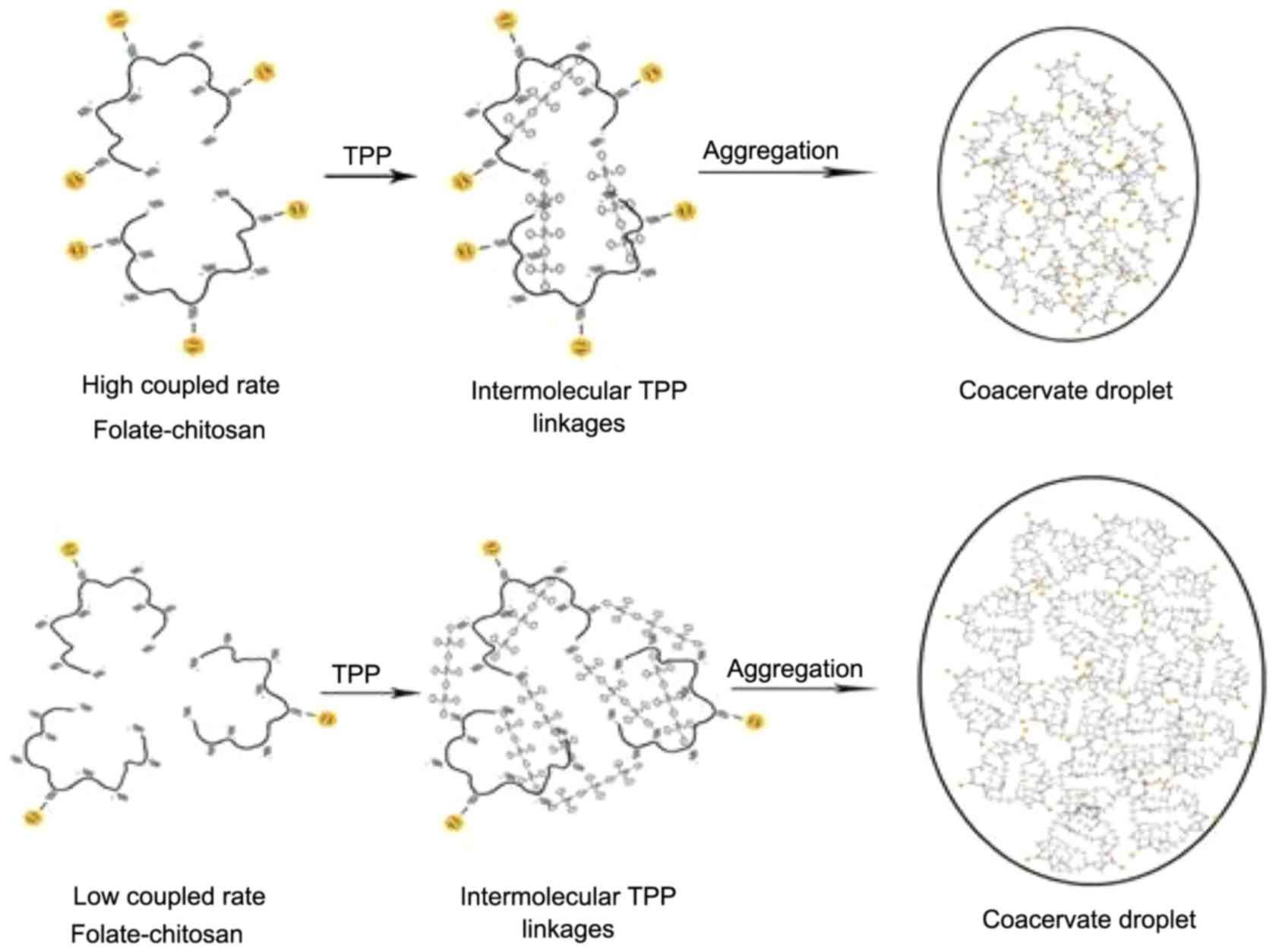|
1
|
Ji XX, Song XL, Qian W, Yu XL and Zhu JY:
Effects and mechanism of action of ligustrazine on
isoprenaline-induced cardiomyocyte hypertrophy. Cell Biochem
Biophys. 70:1513–1518. 2014. View Article : Google Scholar : PubMed/NCBI
|
|
2
|
Chen J, Wang W, Wang H, Liu X and Guo X:
Combination treatment of ligustrazine piperazine derivate DLJ14 and
adriamycin inhibits progression of resistant breast cancer through
inhibition of the EGFR/PI3K/Akt survival pathway and induction of
apoptosis. Drug Discov Ther. 8:33–41. 2014. View Article : Google Scholar : PubMed/NCBI
|
|
3
|
Xu K, Wang P, Xu X, Chu F, Lin J, Zhang Y
and Lei H: An overview on structural modifications of ligustrazine
and biological evaluation of its synthetic derivatives. Res Chem
Intermed. 41:1385–1411. 2015. View Article : Google Scholar
|
|
4
|
Fan Q, Fan GJ, Zhao JY and Yang PM: Study
on effect reversing MDR of ligustrazine liposomes on human
erythroleukemia-cell-line K562/ADM. China Pharmacist. 7:753–755.
2004.
|
|
5
|
Fan GJ, Fan Q and Leng DW: Preparation and
quality evaluation of ligustrazine liposomes. Pharm Care Res.
8:453–455. 2008.
|
|
6
|
Yao Q, Liu W, Gou XJ, Guo XQ, Yan J, Song
Q, Chen FZ, Zhao Q, Chen C and Chen T: Preparation,
characterization, and cytotoxicity of various chitosan
nanoparticles. J Nanomater. 2013:142013. View Article : Google Scholar
|
|
7
|
Li P, Wang Y, Zeng F, Chen L, Peng Z and
Kong LX: Synthesis and characterization of folate conjugated
chitosan and cellular uptake of its nanoparticles in HT-29 cells.
Carbohydr Res. 346:801–806. 2011. View Article : Google Scholar : PubMed/NCBI
|
|
8
|
Milane L, Duan ZF and Amiji M:
Pharmacokinetics and biodistribution of lonidamine/paclitaxel
loaded, EGFR-targeted nanoparticles in an orthotopic animal model
of multi-drug resistant breast cancer. Nanomedicine. 7:435–444.
2011. View Article : Google Scholar : PubMed/NCBI
|
|
9
|
Danhier F, Vroman B, Lecouturier N,
Crokart N, Pourcelle V, Freichels H, Jérôme C, Marchand-Brynaert J,
Feron O and Préat V: Targeting of tumor endothelium by RGD-grafted
PLGA-nanoparticles loaded with paclitaxel. J Control Release.
140:166–173. 2009. View Article : Google Scholar : PubMed/NCBI
|
|
10
|
Shen Z, Li Y, Kohama K, Oneill B and Bi J:
Improved drug targeting of cancer cells by utilizing actively
targetable folic acid-conjugated albumin nanospheres. Pharmacol
Res. 63:51–58. 2011. View Article : Google Scholar : PubMed/NCBI
|
|
11
|
Wang H, Zhao P, Liang X, Gong X, Song T,
Niu R and Chang J: Folate-PEG coated cationic modified
chitosan-cholesterol liposomes for tumor-targeted drug delivery.
Biomaterials. 31:4129–4138. 2010. View Article : Google Scholar : PubMed/NCBI
|
|
12
|
Shi Z, Guo R, Li W and Zhang Y, Xue W,
Tang Y and Zhang Y: Nanoparticles of deoxycholic acid, polyethylene
glycol and folic acid-modified chitosan for targeted delivery of
doxorubicin. J Mater Sci Mater Med. 25:723–731. 2014. View Article : Google Scholar : PubMed/NCBI
|
|
13
|
Song H, Su C, Cui W, Zhu B, Liu L, Chen Z
and Zhao L: Folic acid-chitosan conjugated nanoparticles for
improving tumor-targeted drug delivery. Biomed Res Int.
2013:7231582013. View Article : Google Scholar : PubMed/NCBI
|
|
14
|
Zhou J, Wang J, Xu Q, Xu S, Wen J, Yu Z
and Yang D: Folate-chitosan-gemcitabine core-shell nanoparticles
targeted to pancreatic cancer. Chin J Cancer Res. 25:527–535.
2013.PubMed/NCBI
|
|
15
|
Nagpal K, Singh SK and Mishra DN: Chitosan
nanoparticles: A promising system in novel drug delivery. Chem
Pharm Bull (Tokyo). 58:1423–1430. 2010. View Article : Google Scholar : PubMed/NCBI
|
|
16
|
Hou Z, Zhan C, Jiang Q, Hu Q, Li L, Chang
D, Yang X, Wang Y, Li Y, Ye S, et al: Both FA- and mPEG-conjugated
chitosan nanoparticles for targeted cellular uptake and enhanced
tumor tissue distribution. Nanoscale Res Lett. 6:5632011.
View Article : Google Scholar : PubMed/NCBI
|
|
17
|
Lee KD, Choi SH, Kim DH, Lee HY and Choi
KC: Self-organized nanoparticles based on chitosan-folic acid and
dextran succinate-doxorubicin conjugates for drug targeting. Arch
Pharm Res. 37:1546–1553. 2014. View Article : Google Scholar : PubMed/NCBI
|
|
18
|
Li HL, He YX, Gao QH and Wu GZ:
Folate-polyethylene glycol conjugated carboxymethyl chitosan for
tumor-targeted delivery of 5-fluorouracil. Mol Med Rep. 9:786–792.
2014.PubMed/NCBI
|
|
19
|
Mansouri S, Cuie Y, Winnik F, Shi Q,
Lavigne P, Benderdour M, Beaumont E and Fernandes JC:
Characterization of folate-chitosan-DNA nanoparticles for gene
therapy. Biomaterials. 27:2060–2065. 2006. View Article : Google Scholar : PubMed/NCBI
|
|
20
|
Chen L, Lu Y, Wu JM, Xu B, Zhang LJ, Gao
M, Zheng SZ, Wang AY, Zhang CB, Zhang WW and Lei N: Ligustrazine
inhibits B16F10 melanoma metastasis and suppresses angiogenesis
induced by vascular endothelial growth factor. Biochem Biophys Res
Commun. 386:374–379. 2009. View Article : Google Scholar : PubMed/NCBI
|
|
21
|
Yang XG and Jiang C: Ligustrazine as a
salvage agent for patients with relapsed or refractory
non-Hodgkin's lymphoma. Chin Med J (Engl). 123:3206–3211.
2010.PubMed/NCBI
|
|
22
|
Tan YL and Liu CG: Preparation and
characterization of self-assembled nanoparticles based on folic
acid modified carboxymethyl chitosan. J Mater Sci Mater Med.
22:1213–1220. 2011. View Article : Google Scholar : PubMed/NCBI
|
|
23
|
Ulbrich K, Michaelis M, Rothweiler F,
Knobloch T, Sithisarn P, Cinatl J and Kreuter J: Interaction of
folate-conjugated human serum albumin (HSA) nanoparticles with
tumour cells. Int J Pharm. 406:128–134. 2011. View Article : Google Scholar : PubMed/NCBI
|
|
24
|
Liu Y, Sun J, Cao W, Yang J, Lian H, Li X,
Sun Y, Wang Y, Wang S and He Z: Dual targeting folate-conjugated
hyaluronic acid polymeric micelles for paclitaxel delivery. Int J
Pharm. 421:160–169. 2011. View Article : Google Scholar : PubMed/NCBI
|
|
25
|
Du J, Lane LA and Nie S:
Stimuli-responsive nanoparticles for targeting the tumor
microenvironment. J Control Release. 219:205–214. 2015. View Article : Google Scholar : PubMed/NCBI
|
|
26
|
Loh JW, Yeoh G, Saunders M and Lim LY:
Uptake and cytotoxicity of chitosan nanoparticles in human liver
cells. Toxicol Appl Pharmacol. 249:148–157. 2010. View Article : Google Scholar : PubMed/NCBI
|
|
27
|
Shakeri-Zadeh A, Mansoori GA, Hashemian
AR, Eshghi H, Sazgarnia A and Montazerabadi AR: Cancerous cells
targeting and destruction using folate conjugated gold
nanoparticles. Dyn Biochem Process Biotechnol Mol Biol. 4:6–12.
2010.
|















